Generalmajor
der Waffen-SS Heinz Harmel
Träger der
Schwerter zum Eichenlaub des Ritterkreuz Des Eiserne Kreuze
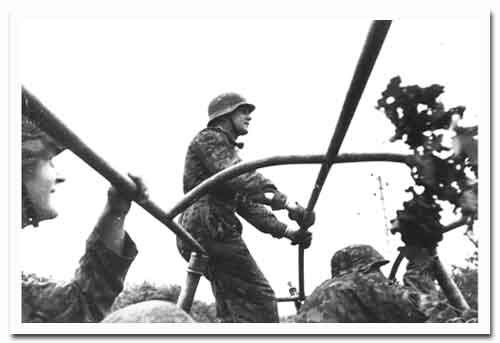
Heinz Harmel in the command
half-track in Normandie.
Courtesy of the Truppenkameradschaft F.


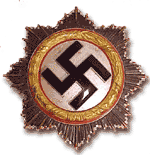
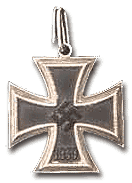
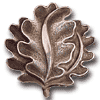
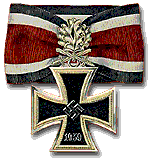


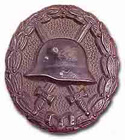
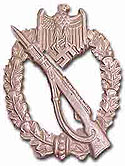
all above images courtesy
of Bill Shea
Citation
for the Knight's Cross to the Iron Cross
Since April 1942, SS-Obersturmbannführer Heinz Harmel is the commander of the SS-Pz.Gren.Rgt. "Deutschland". He is the recipient of the German Cross in Gold as of 26 November 1941. Harmel is a distinguished personality from all theaters. In the west, SS-Obersturmbannführer Harmel displayed exceptional combat resolve using the assault of the Grebbe-Berges in Holland, and during the winter fighting 1941-42 in the east around Rschew. During the current continued campaign in the east, Harmel distinguished himself during the defense in the Oskol-sector.
On 19 February 1942, the "Das Reich" Division received orders to push south against Nowomoskowsk and relieve the weak German units holding the line. The SS-Pz.Gren.Rgt. "Deutschland" was ordered to attack from Otrada against Pereschtschepino and form a bridgehead. On the following day, the SS-Pz.Gren.Rgt. "Der Führer" would attack from the bridgehead against Nowomoskowsk. Despite continued enemy infiltrating along both sides of the route of march, during the night the regimental commander (SS-Obersturmbannführer Harmel) personally led a reinforced Pz.Btl. against Pereschtschepino. German reconnaissance reported the village occupied by one Soviet regiment that was surprised and routed, in its entirety, by the bulk of the reinforced motorized battalion. Approx. 1,500 enemy were killed. The successful establishment of the bridgehead fulfilled the mission of the regiment. Exploiting the situation, Harmel immediately pushed south to expand the bridgehead and destroyed the enemy. By his own initiative during the night, SS-Obersturmbannführer Harmel struck further south with the reinforced battalion. Despite enemy anti-tank fire, SS-Obersturmbannführer Harmel led the attack from in an armored command scout car (Sdkf.232) and personally rallied the Pz.Kp. for the attack. Bitter combat ensued as the battalion succeeded in the capture of Dimitrijewka-Golubowka.
Harmel's quick response to exploit the situation led to the complete route of Soviet forces and expansion of the bridgehead allowed for the division's speedy advance south. During the same day, the SS-Pz.Gren.Rgt. "Der Führer" quickly established communications with German elements in Nowomoskowsk after bitter fighting around Gumbinicha. Thus, the division fulfilled its mission that not only checked the Soviet advance west, but also made possible the attack of the "DAs Reich" regiments against Pawlograd.
Citation for Oakleaves to the Knight's Cross to the Iron Cross
The reinforced SS-Pz.Gren.Rgt. "Deutschland" was employed on 30 July 1943 during the attack on the left side next to the divisional panzergrenadier gruppe, against the enemy position where it had breached the German line. Mission: After the capture of Hill 203,9 proceed 1 km north and secure the western portion of Stepanowka to protect the main divisional thrust to the south in the northeast and east. The attack against Hill 203,9 threatened to bog down early due to exceptionally stiff enemy resistance in well-camouflaged and deep echelon positions along the heights, a thick minefield, and flanking artillery fire from the dominating heights of Hill 213,9.
to be continued...

Copyright Stenger Historica 2004